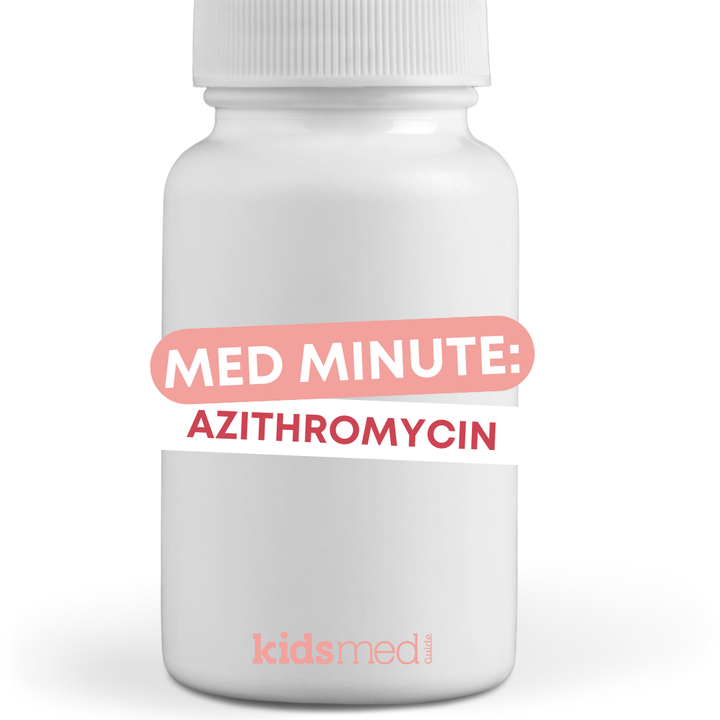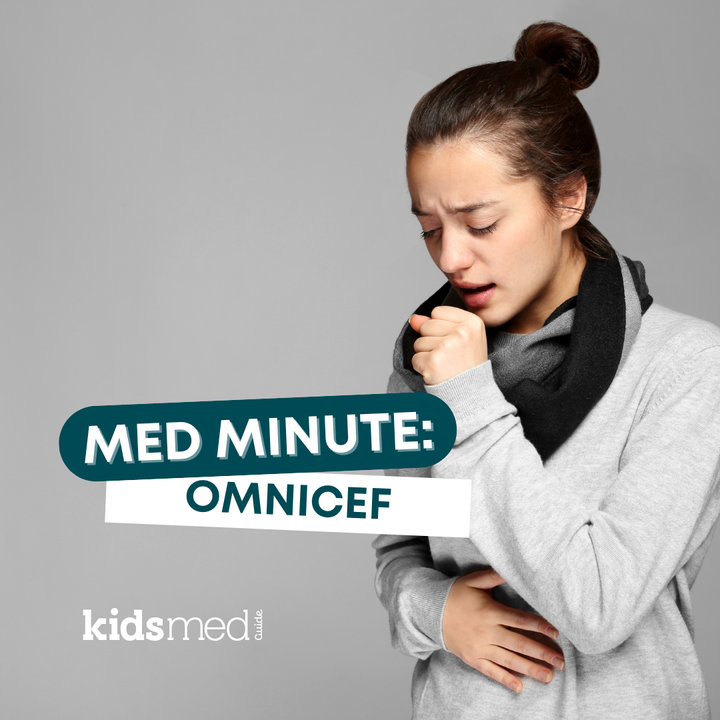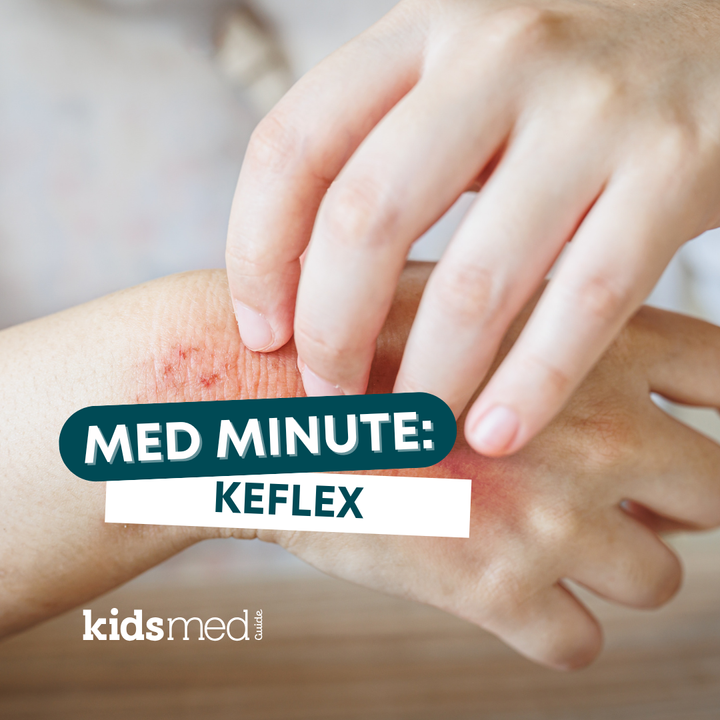Med Minute: Penicillin V Potassium
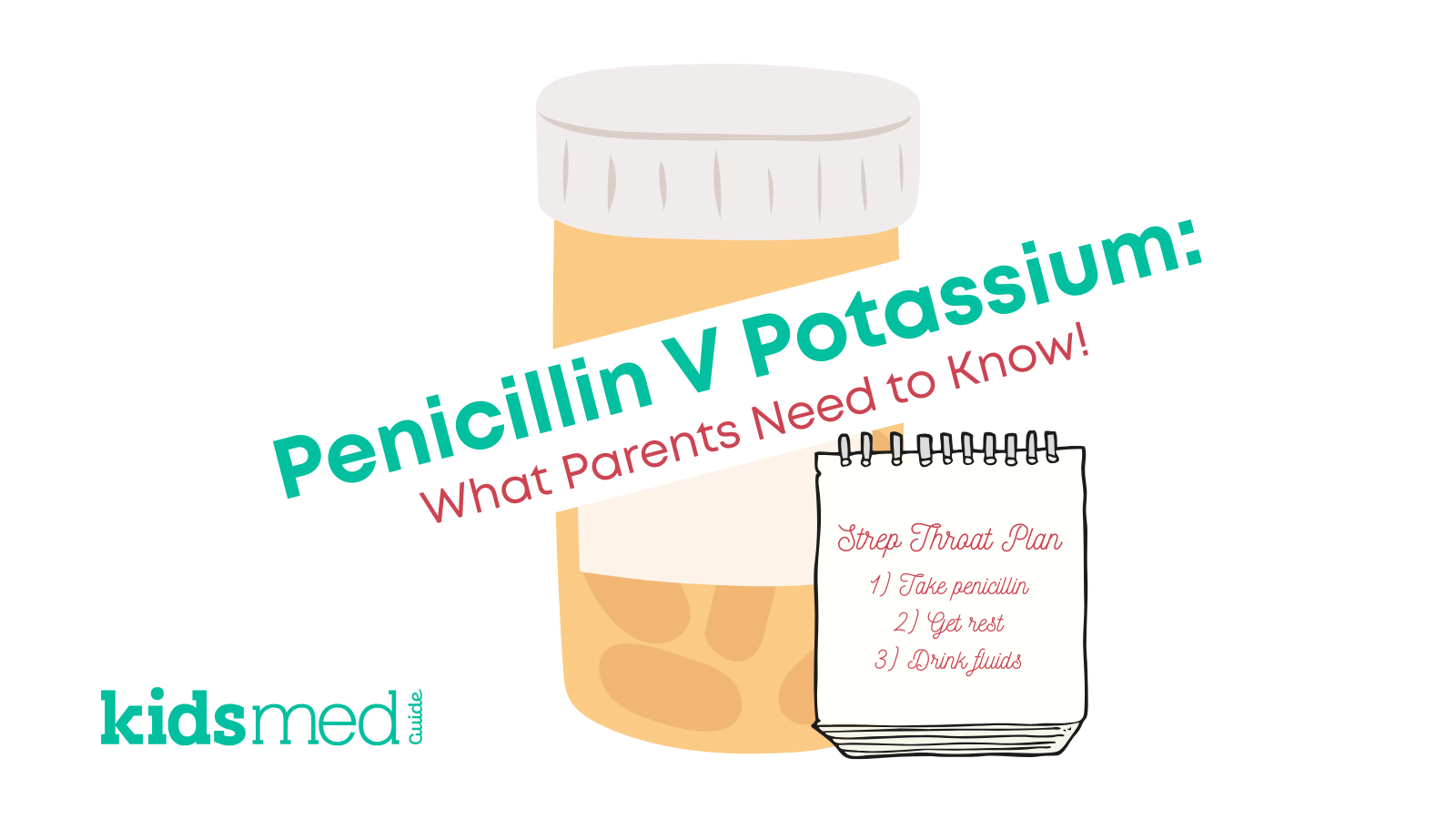
One of the oldest antibiotics still widely prescribed for kids is penicillin. I’m sure you’ve heard of it! Penicillin isn’t the strongest or newest antibiotic, but it definitely has its place in treating common bacterial infections. This guide will help explain what it’s commonly used for, how it works, and the top things parents should know.
What’s It Commonly Used For?
Penicillin V Potassium (also called Penicillin VK) is the most widely used form of penicillin available in oral form. It is prescribed to children to treat certain bacterial infections. The main reason for its use is to treat strep throat in children. This antibiotic not only eliminates the bacteria but also helps prevent serious complications, like rheumatic fever or kidney inflammation caused by a strep infection.
Pediatricians may also prescribe it for other mild bacterial infections caused by some strains of streptococcus, staphylococcus, or pneumococcus in the mouth, throat, or respiratory tract, although strep throat remains the most common reason.
For parents dealing with frequent sore throats at home, it’s important to know that this medication only works when the infection is caused by susceptible bacteria, which a healthcare provider must confirm. It does not work for viruses like the common cold.
How Does It Work?
Penicillin V Potassium belongs to the penicillin class of antibiotics. It works by stopping bacteria from forming their protective cell walls. Without that wall, the bacteria can’t survive or replicate, and the infection clears. Amoxicillin is another drug commonly used in children that's part of the penicillin class.
Because of this specific action, penicillin will only be effective against bacteria that are susceptible to it (many are not). However, for susceptible bacteria, it works very well! Penicillin is not effective for viral illnesses, such as colds, the flu, or most sore throats.
Using antibiotics only when prescribed is one of the best ways to prevent antibiotic resistance.
What’s the Dose?
Your child’s pediatrician will calculate the dose based on weight and age. For strep throat, the typical course of treatment lasts 10 days, and it’s usually given three times a day.
Taking every dose is necessary. Even if your child feels better in just a couple of days, stopping early may allow bacteria to survive and increase the risk of illness complications, treatment failure, and even drug resistance. No one wants a superbug!
Liquid suspensions are often used for younger children, while tablets may be suitable for older kids who can swallow pills.
Penicillin doesn't taste very good. Because of this, some pharmacies might offer flavored liquid. Alternatively, some healthcare providers may recommend amoxicillin due to its more manageable dosing schedule and better taste.
What Are the Most Common Side Effects?
Most children tolerate penicillin very well. Some of the most common penicillin side effects in children include:
- Upset stomach or mild nausea
- Loose stools or mild diarrhea
- Mild rash
If your child has mild diarrhea, consider giving them a short-term course of probiotics or foods rich in probiotic cultures, such as yogurt. For more severe stomach pain or diarrhea, contact your healthcare provider for an assessment.
Report a mild rash to your child’s pediatrician. It might be a normal side effect and not cause for concern, but it’s helpful to have your doctor evaluate whether it’s a minor reaction or a sign of allergy.
Parents should watch for signs of an allergic reaction, such as hives, swelling of the lips or face, trouble breathing, or a widespread rash. If these occur, seek medical help immediately.
How Should My Child Take It?
Practical tips for parents:
- This antibiotic works best on an empty stomach, ideally 1 hour before or 2 hours after meals.
- For liquid doses, always use the measuring device that comes with the liquid form to ensure accurate dosing.
- Try to give doses at the same times each day.
- Never stop the antibiotic early unless directed by your pediatrician.
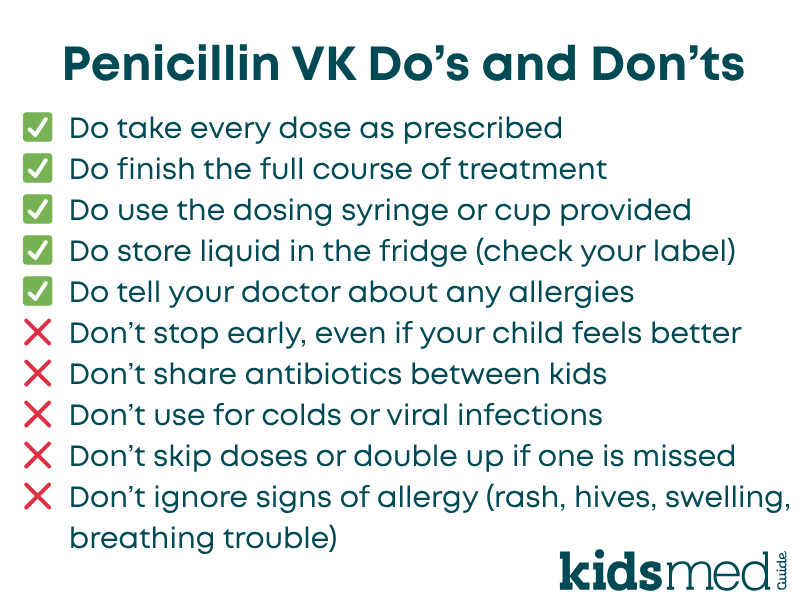
Key Safety Notes
- Allergic reactions are possible, especially in children with a known penicillin allergy history. Make sure your doctor’s office and pharmacy are informed of any drug allergies your child has.
- Never share antibiotics between family members, even if they experience similar symptoms.
- Use Penicillin V Potassium only when prescribed by a healthcare professional for a bacterial infection that it can effectively treat.
- Most liquid formulations should be stored in the fridge, but always double-check the storage requirements of your specific product.
Conclusion
Penicillin V Potassium is a safe and effective treatment for strep throat in children when prescribed by a doctor. It’s also used for other infections of the mouth, throat, and sometimes the respiratory tract. Key takeaways include taking the full course of medication as prescribed and reporting any concerning side effects, such as severe diarrhea or a widespread rash, to your child’s doctor.
Frequently Asked Questions
How quickly does Penicillin V Potassium start working?
Most kids start feeling better within 24–48 hours, but completing the full course (usually 10 days) is necessary to eliminate the bacteria and prevent complications completely.
What if my child is allergic to penicillin?
If your child has a penicillin allergy, your doctor will prescribe an alternative antibiotic in a different drug class, such as cephalexin, azithromycin, or clindamycin.
What should I do if I miss a dose?
Give it as soon as you remember, unless it’s almost time for the next dose. In that case, skip the missed dose. Do not double up on doses.
Why does my child need to take it for 10 days?
A full 10-day course ensures the infection is fully eradicated and prevents complications from improperly treated infections, such as rheumatic fever resulting from strep throat.
When should I seek medical help while using Penicillin V Potassium?
Seek medical help if your child develops a severe rash, hives, swelling, trouble breathing, or if symptoms worsen or do not improve within a few days.
The following references were used to compile this information:
DailyMed—PENICILLIN V POTASSIUM tablet, film coated. (n.d.). Retrieved October 1, 2025, from https://dailymed.nlm.nih.gov/dailymed/drugInfo.cfm?setid=ec25ce45-c0b2-45fa-9211-77f283aad4bd

